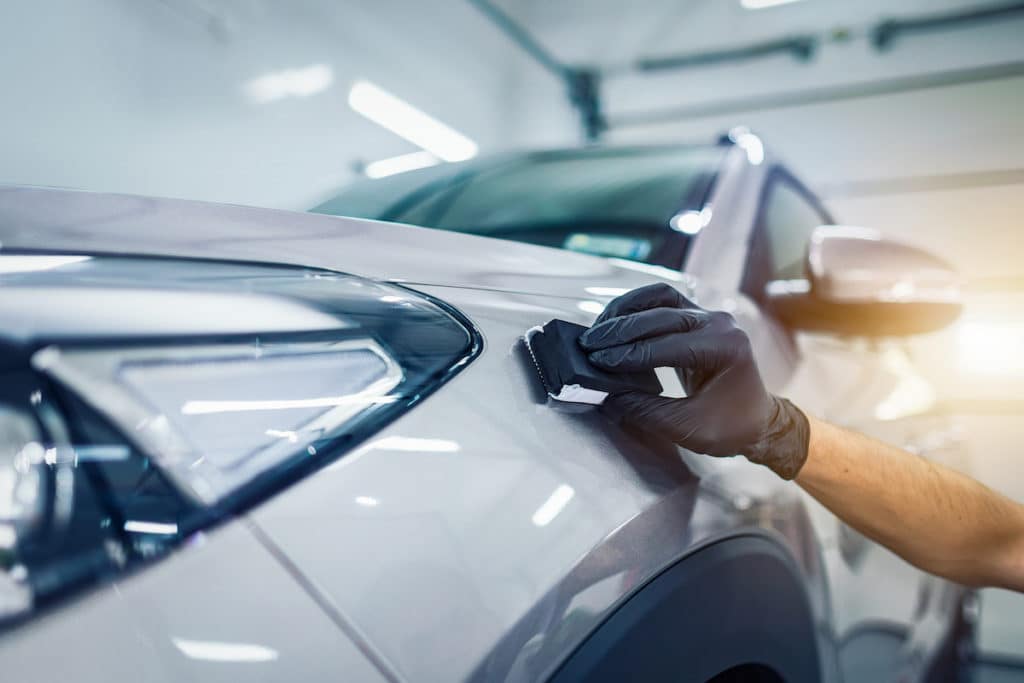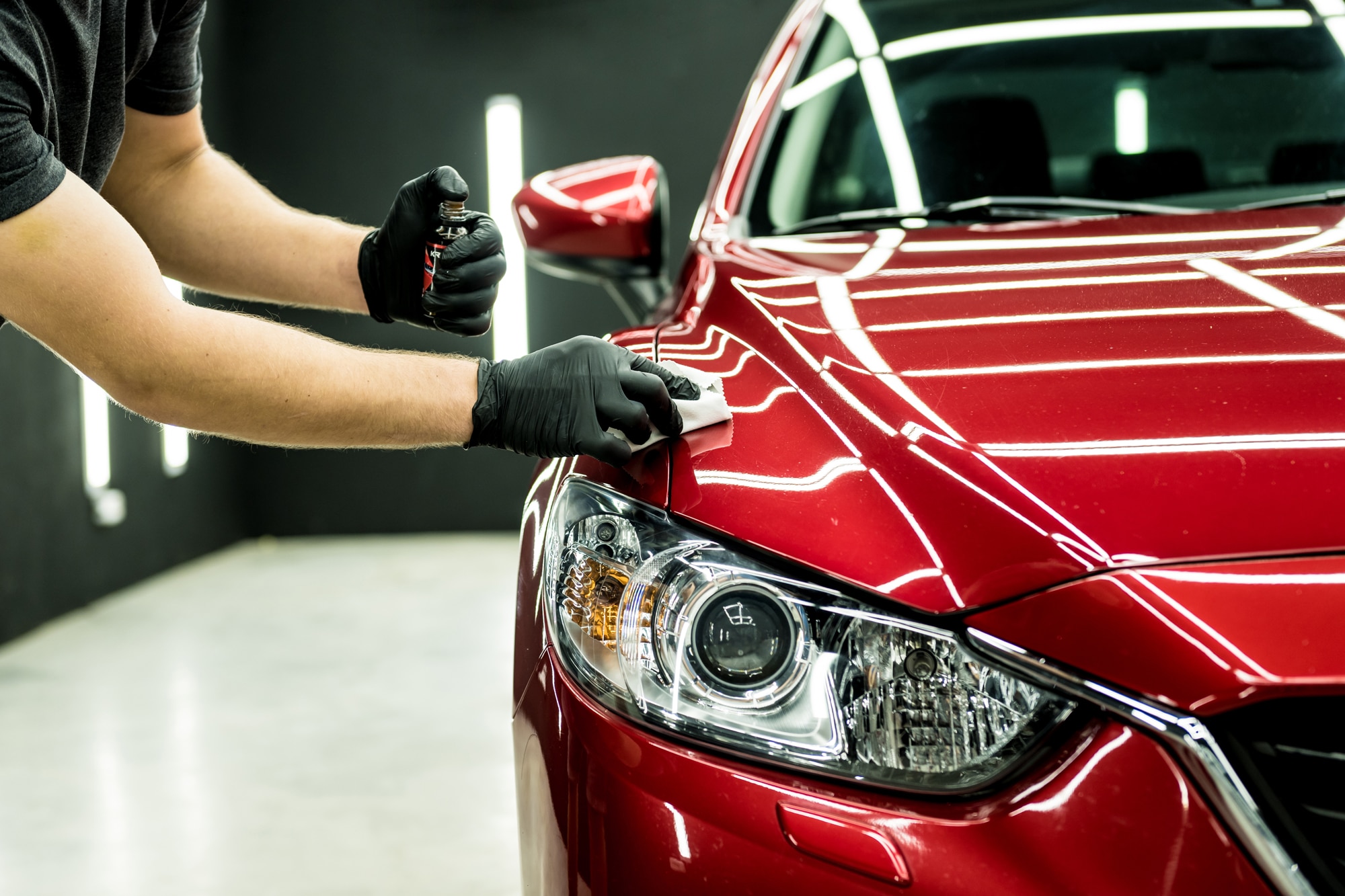Frequently Asked Questions About Ceramic Coating Philadelphia Services Answered
Frequently Asked Questions About Ceramic Coating Philadelphia Services Answered
Blog Article
Why Ceramic Finishing Is the Ultimate Solution for a Flawless End Up
Ceramic finish has emerged as a leading service for those looking for a remarkable finish for their vehicles, many thanks to its remarkable toughness and safety attributes. What factors absolutely set ceramic layer apart?
What Is Ceramic Finish?

When applied correctly, ceramic coating creates a hydrophobic surface area that wards off water and dust, making it easier to maintain and cleanse. Unlike conventional waxes or sealants, which commonly provide brief defense, ceramic finishes can last for several years, depending on the item top quality and application approach. The process of using ceramic finishing calls for careful prep work, including complete cleaning and sometimes repaint improvement, to guarantee optimum bonding and effectiveness.
Ceramic coverings are not restricted to automotive surfaces; they can additionally be utilized on various materials, consisting of glass, steel, and plastics, providing a functional service for enhancing security. Overall, ceramic covering stands for a considerable innovation in surface protection modern technology, incorporating both functional and aesthetic advantages for a wide variety of applications.
Advantages of Ceramic Finishing
While numerous surface protection choices exist, the advantages of ceramic covering attract attention due to its unique residential properties and durable efficiency. Among the primary benefits is its outstanding sturdiness. Ceramic Coating Philadelphia. Unlike standard wax or sealants that call for frequent reapplication, ceramic layers supply a resilient layer that can last for numerous years, considerably lowering maintenance initiatives
An additional noteworthy benefit is enhanced defense against ecological pollutants. Ceramic coatings develop a hydrophobic surface that repels water, dust, and different pollutants, making it less complicated to clean up. This attribute not only preserves the lorry's appearance yet likewise minimizes the threat of rust and oxidation, particularly in rough weather problems.
In addition, ceramic coverings supply remarkable resistance to UV rays, preventing fading and deterioration of paint with time. This UV protection is vital for keeping the visual value of surface areas and lorries revealed to guide sunshine.
Furthermore, the glossy finish achieved with ceramic finishing enhances the general aesthetic appeal, providing surfaces a showroom-quality luster. In general, ceramic coverings represent a significant advancement in surface protection modern technology, offering long-lasting benefits that cater to both practical and visual requirements.
Just How It Works
Comprehending the science behind ceramic finishes discloses just how they give such amazing protection and long life. At its core, a ceramic layer is a fluid polymer that chemically bonds with the lorry's manufacturing facility paint. This bonding produces a safety layer that is both hydrophobic and oleophobic, repelling water, dirt, and oil. The main part of a lot of ceramic coatings is silicon dioxide (SiO2), which is stemmed from quartz. This compound adds to the finishing's hardness and resistance to scratches, UV rays, and environmental contaminants.
The application process entails several actions, read review including surface area preparation, which is important to attaining optimal adhesion. Once used, the finish undertakes a curing process, throughout which it hardens and develops a semi-permanent bond with the paint surface. This bond is what differentiates ceramic layers from typical waxes and sealants, supplying a longer-lasting safety barrier that can withstand for several years.
In addition, the density of the finishing can improve its safety qualities, making sure that it can hold up against rough conditions. Inevitably, the scientific research of ceramic coverings integrates advanced products with innovative application techniques to supply an unequaled degree of protection and visual enhancement for automobiles.
Contrast With Conventional Techniques
The benefits of ceramic finishings end up being especially obvious when contrasted to standard paint defense techniques such as waxes and sealers. While waxes offer a short-lived shine, typically lasting a few weeks to a couple of months, ceramic finishings offer a lasting protective layer that can endure for a number of years. This sturdiness dramatically minimizes the regularity of reapplication, making ceramic layers a more economical service gradually.
Furthermore, standard techniques usually require extensive prep work and several applications to attain a satisfactory degree of defense. On the other hand, ceramic finishings bond at a molecular level with the lorry's surface, developing a robust shield against ecological impurities like UV rays, acid rainfall, and roadway salts. This bond improves the car's resistance to scratches and swirl marks, which prevail with standard waxes and sealants.
Additionally, the hydrophobic residential properties of ceramic finishings drive away water and dust, causing less complicated cleaning and upkeep. In comparison, wax and sealant-treated surface areas can bring in grime, requiring more constant cleaning - Ceramic Coating Philadelphia. In general, ceramic layers not only give remarkable protection however also provide a much more enduring and aesthetically appealing finish, establishing them as the recommended option for critical automobile owners
Application and Maintenance Tips

Making use of a foam applicator, apply the covering in little sections, following the manufacturer's standards regarding density and overlap. Permit adequate healing time between layers, generally 1 day, to make sure appropriate bonding. After application, it is vital to stay clear of direct exposure to water or severe components for a minimum of a week to enable the covering to fully heal.
For upkeep, clean the vehicle regularly with pH-balanced soaps and avoid unpleasant products. Touchless cars and truck cleans are recommended to lessen scraping. Additionally, using a ceramic upkeep spray can boost the covering's hydrophobic residential or commercial properties and durability. Routine examinations for any indications of wear will help maintain the finishing's honesty and preserve that beautiful surface.
Verdict
In verdict, ceramic coating arises as a premium alternative for accomplishing a remarkable vehicle coating. By forming a robust bond with factory paint, ceramic coating efficiently guards versus scratches, UV rays, and environmental impurities.

Report this page